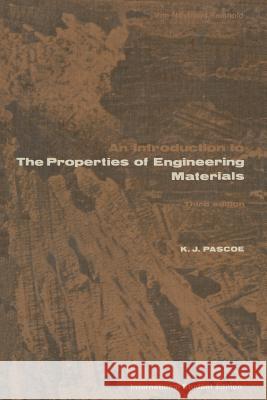An Introduction to the Properties of Engineering Materials » książka
An Introduction to the Properties of Engineering Materials
ISBN-13: 9780442302337 / Angielski / Miękka / 1978 / 439 str.
The engineering designer is always limited by the properties of available materials. Some properties are critically affected by variations in com- position, in state or in testing conditions, while others are much less so. The engineer must know this if he is to make intelligent use of the data on properties of materials that he finds in handbooks and tables, and if he is to exploit successfully new materials as they become available. He can only be aware of these limitations if he understands how pro- perties depend on structure at the atomic, molecular, microscopic and macroscopic levels. Inculcating this awareness is one of the chief aims of the book, which is based on a successful course designed to give university engineering students the necessary basic knowledge of these various levels. The material is equivalent to a course of about eighty to a hundred lectures. In the first part of the book the topics covered are mainly fundamental physics. The structure of the atom, considered in non-wave-mechanical terms, leads to the nature of interatomic forces and aggregations of atoms in the three forms-gases, liquids and solids. Sufficient crystallography is discussed to facilitate an understanding of the mechanical behaviour of the crystals. The band theory of solids is not included, but the basic concepts which form a preliminary to the theory-energy levels of electrons in an atom, Pauli's exclusion principle, and so on-are dealt with.











